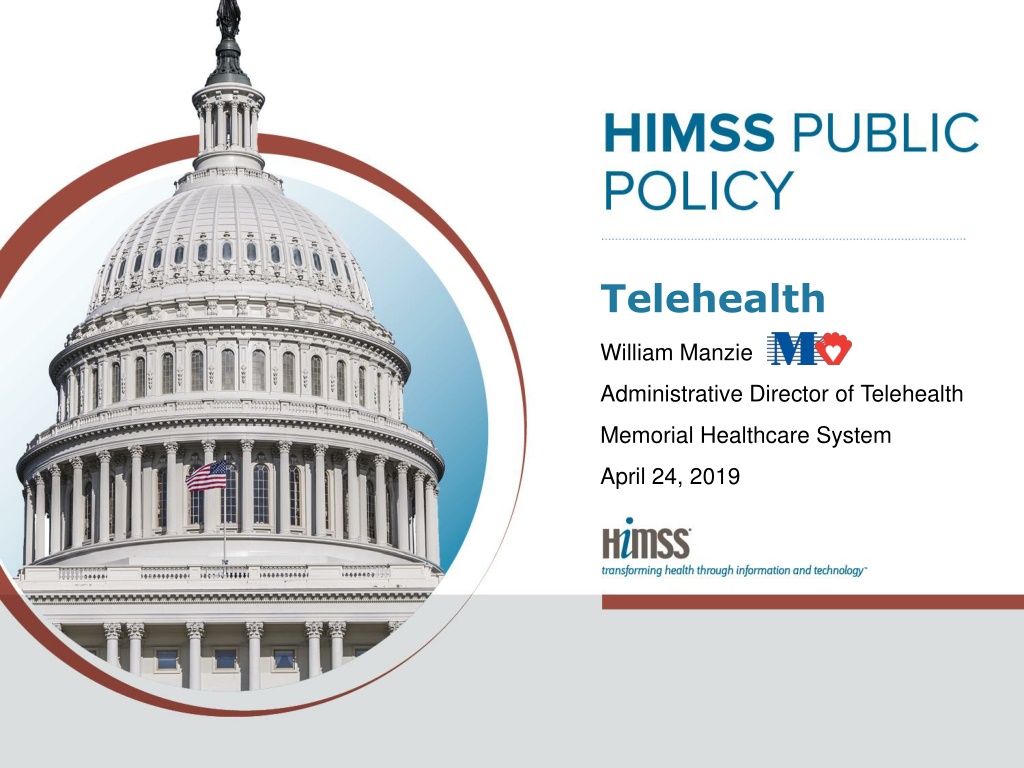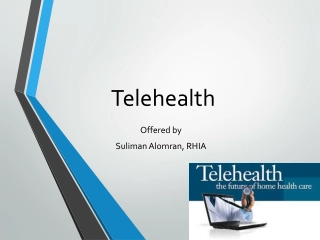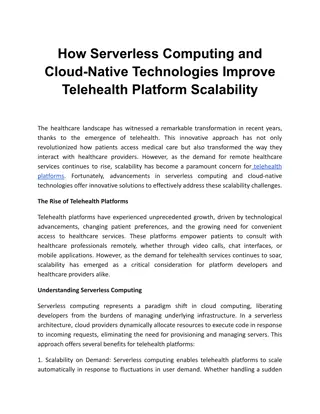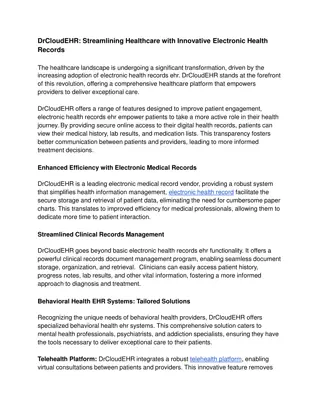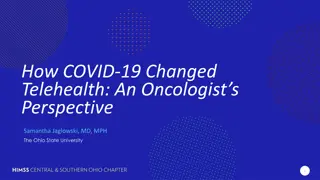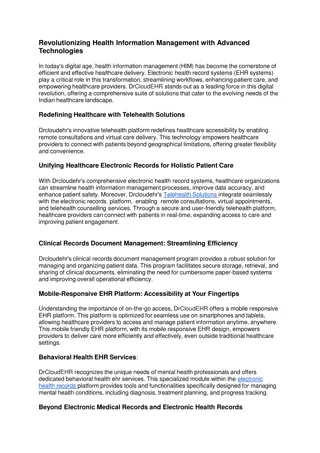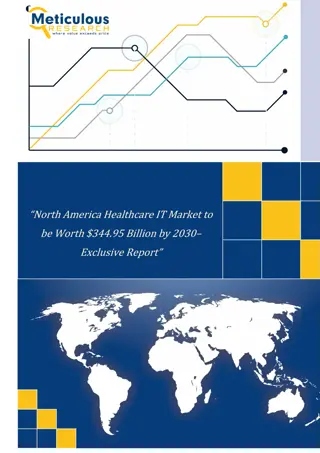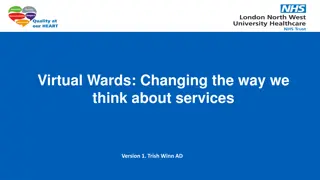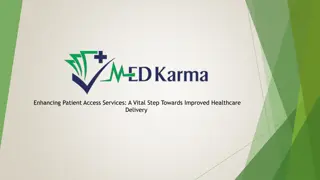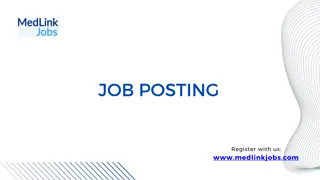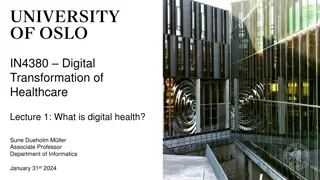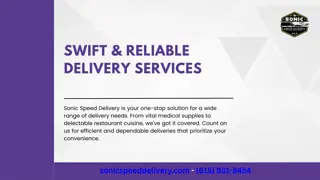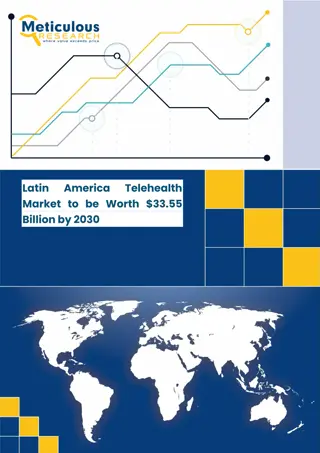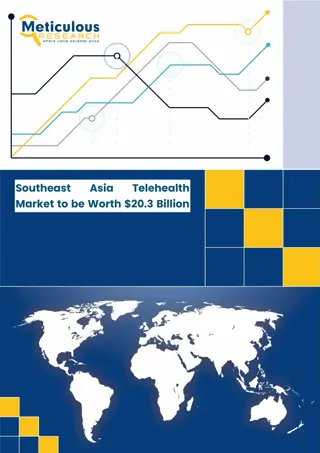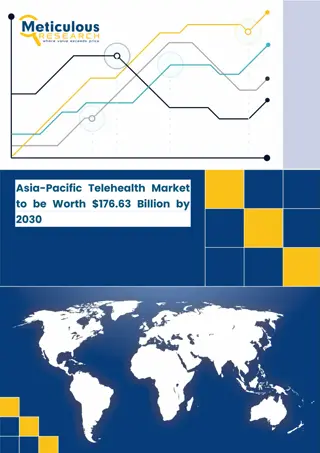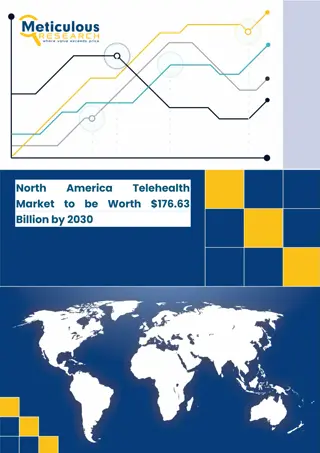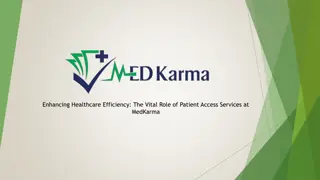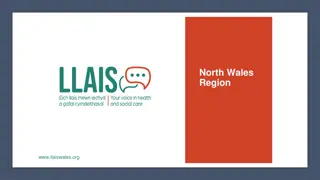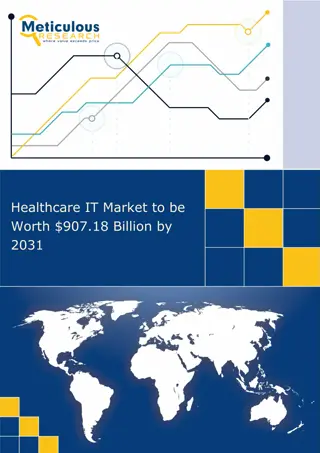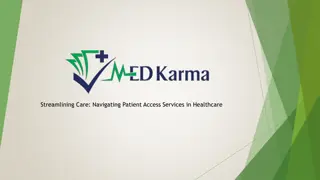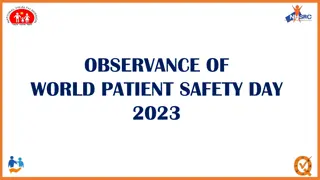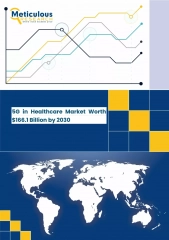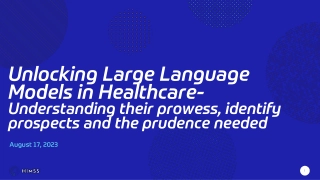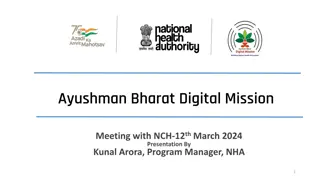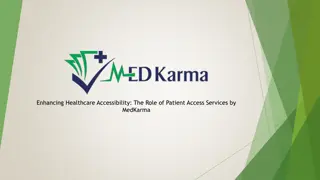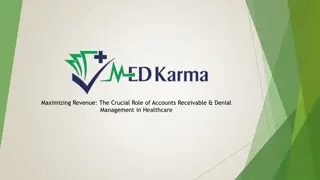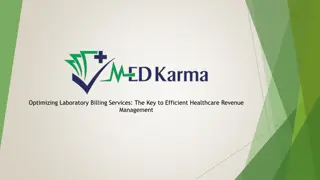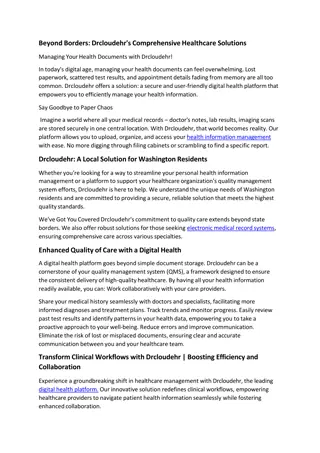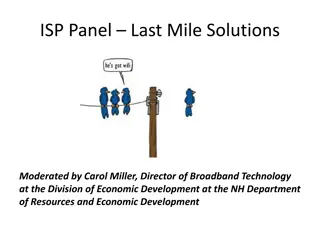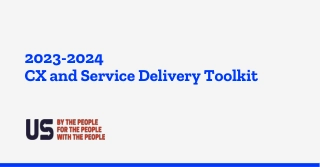The Impact of Telehealth on Healthcare Delivery
Telehealth, the delivery of healthcare services remotely through technology, is gaining significance in the healthcare industry. With the increasing demand for accessible and affordable care, telehealth offers innovative solutions to improve patient outcomes, reduce costs, and enhance convenience. Investments in telehealth align with value-based care goals and contribute to achieving the triple aim in healthcare. By leveraging telehealth, providers can ensure continuity of care, enhance patient management, and address the challenges faced in traditional healthcare models. Embracing telehealth is crucial for addressing the inefficiencies and disparities in the current healthcare landscape.
The Impact of Telehealth on Healthcare Delivery
PowerPoint presentation about 'The Impact of Telehealth on Healthcare Delivery'. This presentation describes the topic on Telehealth, the delivery of healthcare services remotely through technology, is gaining significance in the healthcare industry. With the increasing demand for accessible and affordable care, telehealth offers innovative solutions to improve patient outcomes, reduce costs, and enhance convenience. Investments in telehealth align with value-based care goals and contribute to achieving the triple aim in healthcare. By leveraging telehealth, providers can ensure continuity of care, enhance patient management, and address the challenges faced in traditional healthcare models. Embracing telehealth is crucial for addressing the inefficiencies and disparities in the current healthcare landscape.. Download this presentation absolutely free.
Presentation Transcript
Telehealth William Manzie Administrative Director of Telehealth Memorial Healthcare System April 24, 2019
What is Telehealth and Why Should We Care? Telehealth refers to; clinical services that can be delivered remotely and which utilize electronic communications or software to deliver health care without an in-person visit being required. Simply put . it s delivering health care using technology! From simple technology Smartphones Wearables To more complex technology Clinic Kiosks Telehealth Carts
What is Telehealth and Why Should We Care? EXPECTATIONS!!! A demand which is upon us today by federal and state leaders, and by the consumer is to have accessible more affordable care. It is estimated that 77% of Americans own smartphones and use their device for daily tasks Legislators are expecting solutions for reducing healthcare spend and improving patient outcomes Healthcare executives expect innovative thinking when developing programs which provide a service to the community
The Value of Telehealth As we have heard time and time again, focusing on the triple aim in healthcare will yield valuable results. As such, selecting telehealth investments based on goals should be priority. Telehealth-enabled imperatives for growth, value-based care goals Growth Value-based care Enhance patient access and convenience Reduce costs by shifting patients to lower cost settings Real-time virtual visits Attract and retain new patients Cut patient/provider travel time Differentiate from competitors Reduce avoidable emergency department utilization and 30-day readmissions Remote patient monitoring Align with consumer interest in technology Reduce wait time to next appointment and no-show rates Increase patient activation and engagement Asynchronous store-and-forward Achieve operational efficiencies Expand specialist coverage Source: Service Line Strategy Advisor research and analysis.
Continuity of Care Improving quality of care buy enhancing how care is delivered both within and beyond the walls of the hospital Using telehealth as a means to improve patient management between providers Creating a patient never truly gets discharged model and avoiding the black hole of care There is no I in healthcare
What Got Us Here Wont Get Us There In 2017, the United States spent about $3.5 trillion, or 18 percent of GDP, on health expenditures more than twice the average among developed countries During 2016, combined and state spending for Medicaid totaled about $21.8 billion in Florida Florida ranked #48 for overall health care among 50 states + the District of Columbia. Florida ranked 49th for access, quality and use of health care Chronic diseases are among the leading causes of morbidity, mortality and disability Behavioral health disorders increase the risk of many major causes of death in Florida
How Do We Begin to Get There? Improving Healthcare with out of the box thinking while focusing on the Triple Aim 1. Improving the patient experience 2. Reducing the per capita costs of health care 3. Improving the health of populations overall If you are not taking steps to move forward, you end up moving backwards You don t have to be great to get started, but you have to get started to be great
Using Telehealth to Achieve Our Goals Managing Patients Chronic Conditions Differently Most health care-related costs in the U.S. are associated with chronic disease conditions The percentage of children with chronic conditions has risen dramatically Converting from a reactive system to a proactive system Look at the highest risk populations and develop targeted programs (population health) As a result, Memorial Healthcare System offers the following telehealth programs: Remote patient monitoring Delivering care in the home Ability to track results in EMR TelePrimary Care TelePharmacy TeleBehavioral Health Complex chronic care via Telehealth HIV care plan compliance TeleAsthma TeleOncology
Never Truly Being Discharged Use telehealth to create solutions where our care of the patient continues after discharge. Utilizing telehealth technology to connect with patients sooner and more frequently Providing a virtual resource to assist with social determinants of health Developing a support system for secondary conditions such as wound care As a result, Memorial Healthcare System offers the following telehealth programs: Wound care (soon, TeleWound Care) Post-surgical follow-up Telehelath on-call TeleBehavioral Health Virtual Lactation Consultant Post-discharge TelePharmacy TeleNutritionist Virtual Primary Care Coordination
On-Demand Assisted Services Opioid Crisis From Florida data in 2014, 89.5% reported needing but not receiving treatment for Opioid Abuse. This is from a population aged 12 or older reporting illicit drug dependence or abuse. Florida saw 5,088 drug related deaths in 2017 Drug related deaths per 100,000 - Florida 24.2, National 21.6 As a result, Memorial Healthcare System offers programs to assist in the opioid crisis. The following telehealth programs are used to augment what is being done today in person. Telehealth to expand access (MAT program) Virtual pharmacist (prevention and education including distribution of narcan kits) Additional opportunities: expanding virtual treatment options for recovery
On-Demand Assisted Services Current Telehealth Workflow assisting with the Opioid Crisis in ER s Patient arrival Overdose/Requesting treatment Physician order for MAT consult RN/Secretary contacts Behavioral Health Unit (BHU) Time is set for virtual consult Explain video call process to patient Bring cart to bedside Provide patient with head phone for privacy BHU RN to conduct a mental status exam and explain MAT program Remain at the bedside during telehealth visit for safety Provide patient with MAT pamphlets Give take home Narcan-kit BHU RN will take care of the rest
On-Demand Assisted Services Telehealth MAT Workflow allows Memorial to Utilize Clinical Resources more efficiently and rapidly. When needed, pharmacists connect via telehealth to provide the necessary clinical information and education to the patient and family. As a result of the Telehealth MAT program, Memorial has experienced improved engagement by the patient and family to receive care. During the connection, patients receive: Take home kit Given to everyone who presents with CC of OD and/or requesting treatment 2 doses Intranasal Given as many times as necessary Part of the efforts in combating the crisis Education by ED pharmacist
On-Demand Assisted Services Stroke Consults are conducted with patients who present to the ER with a possible stroke Neurologist on-call uses telehealth to virtually connect with the on-site clinical team The neurologist is able to view, visually examine the patient and zoom into the extremities as well as facial features The purpose of the program is to improve clinical outcomes by: Reducing door to needle times Discontinuing unnecessary TPA treatment Provide a higher level of physician specialty support TeleStroke is similarly used for in-patient stroke alerts Time to treatment is key As a result, Memorial Healthcare System implemented a telehealth program which facilitates an expedited on-demand physician connection using a smartphone and a telehealth cart.
Employers Empower Workforce Health Telehealth interest grows with desire to curb costs, absenteeism and employee maintenance is how to accomplish this. Embracing telehealth to contain costs Employee absence, demonstrable loss 51% $226B Cost of absenteeism to U.S. employers1 Large employers that identify virtual health solutions as their top health care initiative in 2019 The case for savings $6B 26% Large employers that financially incentivize telehealth utilization Estimated savings among US employers with at least 1,000 employees with virtual consults versus escalated care options2
Employee Services With our commitment to the triple aim and what we are doing to better manage our patient population, Memorial Healthcare System also committed to better managing the care of our employees. 24/7 application based connection to a physician Available MemorialDOCNow station in our largest hospital available to working employees 24/7 Employees receive this as a free benefit Advantages Offer employees a lower cost of care where appropriate Reduce absenteeism Initiate treatment of illness sooner Stats 94% patient satisfaction 97% of patients surveyed said their health care concern was resolved 37% of patients surveyed said they would have gone to the ER
The Proactive Approach The prospect of healthcare organizations implementing remote patient monitoring (RPM) technology increases the capacity for clinicians to manage more patients. In addition, RPM allows the clinician to monitor patients and proactively identify any negative trends. Monitoring patients and proactively identifying negative trends reduces the likelihood of an ER visit or readmission RPM allows the care team to actively manage the patients condition with the physician, pharmacy and other clinicians in a timely manor Better access to healthcare by communicating with patients in their home Improved quality of care due to the frequency of connections Peace of mind and daily assurance by support of self management Improved support, education and feedback due to interoperability
Interoperability Interoperability is about getting the right information to the right people at the right times so that it can be used to take better care of patients, and then provide accountability and performance metrics for quality standards and reimbursement. To support these efforts, payers are incenting telehealth interoperability to help reduce total cost of care and unplanned utilization of care Without the support of enterprise top-down leadership, central governance, standard processes, and workflows, these initiatives can face predictable resistance from clinicians and cannot be effectively scaled Example of a telehealth interoperability platform as documented by the American Telemedicine Association
Interoperability Here is an example of a configurable, connected modular design, which becomes a technology enabler for scalable telehealth initiatives that can reduce complexity and technical risk, even during periods of rapid change and that support long-term programs, even without a clear view of future clinical or business objectives.
Telehealth Program Challenges Threat to bottom line is a key challenge to providers and health systems. Determining ROI 21% 55% 13% 11% Cost of supporting technology 15% 48% 23% 14% Lack of funding 18% 45% 13% 23% Private payer reimbursement 25% 55% 10% 10% Medcaid reimbursement 29% 44% 17% 10% Inadequate telemdicine parity laws 40% 37% 9% 14% Unaddressed Partially addressed Fully addressed Not a challenge REACH Health 2018 U.S. Telemedicine Industry Benchmark Survey
Telehealth Program Challenges cont. Inadequate telehealth parity laws and reimbursement Differentiating telehealth regulations between governing bodies Integration between solution platforms Patient education Segmented systems creating workflow challenges Perception REACH Health 2018 U.S. Telemedicine Industry Benchmark Survey
Looking Towards the Future Artificial Intelligence (AI) Chat bots Expanded remote patient monitoring capabilities Hospital at home Moving beyond the direct to consumer model Greater utilization of connected devices Deeper integration amongst delivery platforms Asynchronous telehealth communications 5G mobile cellular phone technologies Expanded broadband as commented by the FCC
Conclusion We as leaders must continue looking for non-traditional methods of delivering care to provide solutions which will improve upon the current state of healthcare. Utilizing telehealth provides unlimited opportunities that focus on the triple aim: 1. Improving the patient experience 2. Reducing the per capita costs of health care 3. Improving the health of populations overall Bill Manzie
Thank You William Manzie William Manzie Administrative Director of Telehealth Administrative Director of Telehealth Memorial Healthcare System Memorial Healthcare System William Manzie William Manzie @TelehealthBill @TelehealthBill
